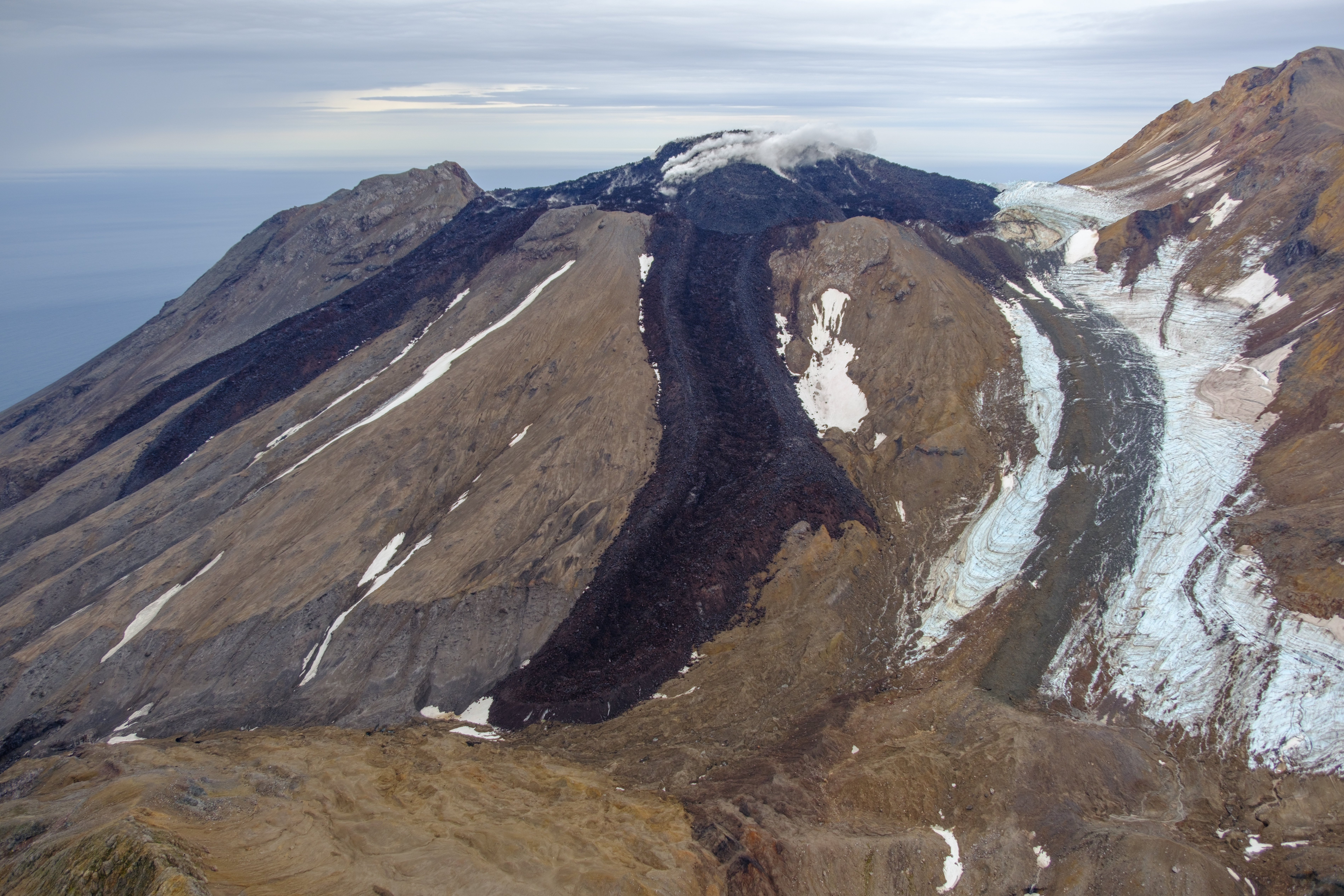Report on Great Sitkin (United States) — November 2023
Bulletin of the Global Volcanism Network, vol. 48, no. 11 (November 2023)
Managing Editor: Edward Venzke.
Research and preparation by Berger.
Great Sitkin (United States) Slow lava effusion in summit crater continued during May-October 2023
Please cite this report as:
Global Volcanism Program, 2023. Report on Great Sitkin (United States) (Venzke, E., ed.). Bulletin of the Global Volcanism Network, 48:11. Smithsonian Institution.
Great Sitkin
United States
52.076°N, 176.13°W; summit elev. 1740 m
All times are local (unless otherwise noted)
Following weak phreatic explosions at Great Sitkin in June-August 2018 and June 2019, an ash explosion on 25 May 2021 preceded the growth of a lava dome in the summit crater starting in mid-July 2021. Continued lava effusion overtopped the summit crater wall; lava flowed down the N, S, and W flanks (BGVN 46:08, 47:05). This activity subsided during January-April 2022, although slow lava effusion, accompanied by minor steam-and-gas emissions and weak seismicity, continued through April 2023 (BGVN 48:05). Great Sitkin (figure 26), located in Alaska’s Aleutian Island chain, is monitored by the Alaska Volcano Observatory (AVO) using local seismic and infrasound sensors, satellite data, web cameras, and remote infrasound and lightning networks.
According to AVO, the slow, persistent, thick lava effusion continued during May-October 2023, expanding E into glacial ice but remaining confined to the summit crater. This activity was accompanied by weak seismic activity, minor steam emissions, and slightly elevated temperatures consistent with cooling lava. Weather clouds frequently obscured visibility. During the first week of September, an AVO field geology team visited the volcano and sampled the lava flow, did aerial photography (figures 27 and 28) and thermal imaging surveys, and measured gas emissions. The team observed that the flows were warm and steaming (figure 29), moving about 1 m every 3-4 days.
 |
Figure 28. Aerial photo of Great Sitkin taken during a helicopter overflight on 3 September 2023, looking NE at the active lava flows in the crater. Photo by Matt Loewen, courtesy of AVO. |
Geological Summary. The Great Sitkin volcano forms much of the northern side of Great Sitkin Island. A younger volcano capped by a small, 0.8 x 1.2 km ice-filled summit caldera was constructed within a large late-Pleistocene or early Holocene scarp formed by massive edifice failure that truncated an older edifice and produced a submarine debris avalanche. Deposits from this and an even older debris avalanche from a source to the south cover a broad area of the ocean floor north of the volcano. The summit lies along the eastern rim of the younger collapse scarp. Deposits from an earlier caldera-forming eruption of unknown age cover the flanks of the island to a depth up to 6 m. The small younger caldera was partially filled by lava domes emplaced in 1945 and 1974, and five small older flank lava domes, two of which lie on the coastline, were constructed along northwest- and NNW-trending lines. Hot springs, mud pots, and fumaroles occur near the head of Big Fox Creek, south of the volcano. Eruptions have been recorded since the late-19th century.
Information Contacts: Alaska Volcano Observatory (AVO), a cooperative program of a) U.S. Geological Survey, 4200 University Drive, Anchorage, AK 99508-4667 USA (URL: https://avo.alaska.edu/), b) Geophysical Institute, University of Alaska, PO Box 757320, Fairbanks, AK 99775-7320, USA, and c) Alaska Division of Geological & Geophysical Surveys, 794 University Ave., Suite 200, Fairbanks, AK 99709, USA (URL: http://dggs.alaska.gov/); Copernicus Browser (URL: https://dataspace.copernicus.eu/browser).




